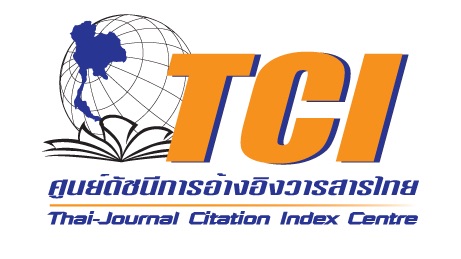“Ogre” Reflection of Belief about Ghosts in Thai Lue Ethnic and Isan Ethnic
Keywords:
Belief, Ogre, Reflection, Thai Lue Ethnic Xishuangbanna, Isan EthnicAbstract
This study aims to compare reflections on ogres in Thai Lue ethnic and Isan ethnic by studying documents and research related to ghosts in Thailand and China. The study is divided into 3 points, including belief about the origin of Ogres in Thai Lue ethnic and Isan ethnic, the process of becoming an Ogre and driving them out Ogres in Thai Lue ethic and Isan ethic, and the interpretation of changes in beliefs about Ogres in modern society.
The result of the study found that the belief about the origin of Ogres can be divided into three categories as follows: 1) the history of Ogre, 2) the process of becoming an Ogre, and 3) the cognition of being an Ogre. Furthermore, the process of becoming an Ogre follows 3 distinct stages: Firstly, a person is identified as an Ogre, then a ritual is performed to confirm and banish the Ogre. Finally, the person receives punishment from the society. Two factors were found to contribute to the changing beliefs about Ogres in contemporary society. The utilization of humorous or fantastical films has significantly changed the beliefs about Ogres. Also, diseases have contributed to the change of ancient beliefs about Ogres in modern society.
References
กชกร โพธิหล้า. (2555). การศึกษาวิเคราะห์อิทธิพลความเชื่อเรื่องผีปอบที่มีความสัมพันธ์กับพิธีกรรมทางพระพุทธศาสนา : กรณีศึกษา บ้านดอนยานาง จังหวัดกาฬสินธุ์. วิทยานิพนธ์ปริญญามหาบัณฑิต. มหาวิทยาลัยจุฬาลงกรณราชวิทยาลัย.
กมลเลศ โพธิกนิษฐ. (2555). การทำให้เป็น “ผีปอบ” และการกีดกันทางสังคมในมุมมองของการบริหารความขัดแย้ง. วารสารสถาบัน, 10(2), 3-10.
สงัน สุวรรณเลิศ. (2529). ผีปอบผีเข้าในทรรศนะทางจิตเวชศาสตร์. บพิธการพิมพ์.
สมชาย นิลอาธิ. (2555). หมู่บ้านผีปอบ บ้านรักษาผีปอบ กรณีบ้านนาสาวนาน อำเภอพรรณนานิคม จังหวัดสกลนคร. วารสารมนุษยศาสตร์และสังคมศาสตร์ มหาวิทยาลัยอุบลราชธานี, 3(2), 1-16.
อภิมุข สดมพฤกษ์. (2558). การศึกษากระบวนการตีตราทางสังคมที่ทำให้บุคคลกลายเป็นผีปอบ. วิทยานิพนธ์ปริญญามหาบัณฑิต. สถาบันบัณฑิตพัฒนบริหารศาสตร์.
อภินันท์ สงเคราะห์. (2556). เรื่องผีในอีสาน : ความเชื่อและพิธีกรรมที่เกี่ยวข้องกับผีของกลุ่มชาติพันธุ์ลาว เขมร ส่วย และเวียดนาม ที่อาศัยอยู่ในบริเวณอีสานใต้ของประเทศไทย. อุบลราชธานี: งานส่งเสริมการวิจัยและทำนุบำรุงศิลปวัฒนธรรม มหาวิทยาลัยอุบลราชธานี.
Zhao, W. (2008). “Pipa Ghost” and the Imagination of Others: A Case Study of the Dai Nationality in Xishuangbanna (琵琶鬼与他者想象——以西双版纳傣族为例). MA Dissertation. Minzu University of China.
Liu, F. (2013). Mangui’s Previous and Current Lives: the self-construction of a Dai “Pipa Ghost Village” (曼桂的前世和今生:一个傣族“琵琶鬼寨”的自我建构). Journal of Pu’er University, 29(1), 66-69.
Yunnan Provincial Institute of History. (1979). Investigation Materials on Theravada Buddhism and Primitive Religion of the Dai Nationality in Xishuangbanna (西双版纳傣族小乘佛教及原始宗教的调查材料). Kunming.
Zhao, S. & Wu, Q. (1997). Dai Culture (傣族文化志). Yunnan Nationalities Publishing House.
Zhou, Q. (2007). A Preliminary Study on the Miasma Environment in Yunnan during the Qing Dynasty (云南清代瘴气环境初论). Journal of Southwest University, 33(3), 44-52.
Downloads
Published
How to Cite
Issue
Section
License
Copyright (c) 2024 Journal of Human and Society, Sisaket Rajabhat University

This work is licensed under a Creative Commons Attribution-NonCommercial-NoDerivatives 4.0 International License.







